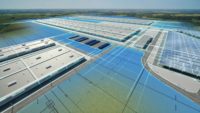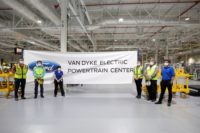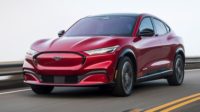A century ago, vertical integration thrived at Ford Motor Co. Today, as the curtain starts to close on the golden age of the internal combustion engine, Ford is rethinking its strategy for building electric vehicle components in-house.
“We have to decide how vertically integrated we want to be,” says Jim Farley Jr., president and CEO of Ford Motor Co. “We’ve been buying our batteries, and this strategy has worked well for our first cycle of products. It has enabled us to cherry pick the chemistry that works best for energy density.
“We’ve now decided to vertically integrate our electric motors and inverters,” explains Farley. “We [can easily] move people over from producing traditional internal combustion engine (ICE) components to EV components.
Farley made his comments during the recent Reuters Automotive Summit, a virtual event that featured many top executives from the auto industry.
“Electric vehicles have 40 percent fewer parts than ICEs,” notes Farley. “They’re also a lot easier to put together. When electrification becomes 25 percent or 50 percent of [sales in the future], we’ll have to address what we’re going to do about jobs.”
According to Farley, one option is to produce battery cells in-house, which is a strategy used by other automakers such as General Motors and Tesla. Those companies make their own cells to supplement production from suppliers like LG Chem that have been struggling to keep up with unprecedented demand.
“We’re discussing how to get into battery cell production [for several reasons],” says Farley. “One is to back-fill manufacturing labor. We’re also finding that there’s not a lot of capacity flexibility if you buy your batteries from someone else.
“[But, batteries require] a completely different type of production process [than traditional automotive assembly], such as clean rooms” adds Farley. “It’s also very cash-intensive to set up cell production lines.
“Volume is growing, so it’s a natural time to have this discussion,” notes Farley. “If we discussed it a year or two ago, it would have been too early. If we wait five years, it will be too late.
“We want to be a leader in electrification in high-volume market segments,” claims Farley. “By the time the second [wave] of EV products come out in 2025, there will be a lot more cost and price pressures.”
Ford plans to invest more than $11 billion globally over the next few years to expand its electric vehicle footprint. Almost one-third of that money will be earmarked toward upgrading and retooling the company’s North American production facilities.
Among the highlights is a new assembly plant at Ford’s flagship Rouge complex in Dearborn, MI, that will build an all-electric version of the popular F-150 pickup truck. The automaker is also investing $100 million to upgrade its Kansas City plant, which will begin mass-producing the E-Transit van starting late next year.
To support those new electric vehicles, Ford is spending $150 million to refurbish its 52-year-old Van Dyke Transmission Plant in Sterling Heights, MI. The recipient of ASSEMBLY magazine’s 2018 Assembly Plant of the Year award will soon begin building e-motors and e-transaxles.




